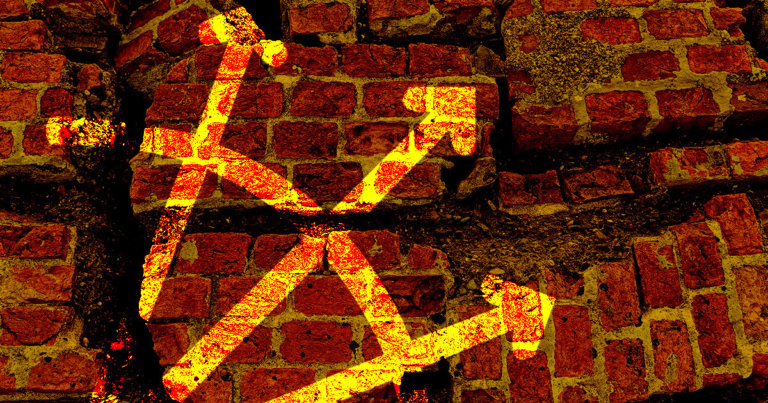 The downfall of Three Arrows Capital (3AC): What went wrong?
The downfall of Three Arrows Capital (3AC): What went wrong? The downfall of Three Arrows Capital (3AC): What went wrong?
Three Arrows Capital (3AC) was founded in 2012 by Kyle Davies and Su Zhu, who attended Columbia University together and later worked as colleagues at banking giant Credit Suisse.

Cover art/illustration via CryptoSlate. Image includes combined content which may include AI-generated content.
The past few weeks have been turbulent, even for hardened market participants. The crypto market lost massive value, and some players were wiped out. However, this time, there are also big names among these players, such as Singapore-based crypto hedge fund Three Arrows Capital (3AC).
3AC was founded in 2012 by Kyle Davies and Su Zhu, who attended Columbia University together and later worked as colleagues at banking giant Credit Suisse.
Over the years, 3AC rose to become one of the top players in the industry with stakes in numerous projects, including LUNA, Aave, Avalanche, BlockFi, Deribit, and Solana. As it grew, the company began taking riskier bets on the market, and when LUNA collapsed in May, it set off a chain reaction of events that ultimately led to its collapse.
While the rumor mill was already bubbling on Twitter beforehand, on June 16, the Financial Times reported that 3AC had failed to meet its margin calls. A few days later, the Wall Street Journal reported that 3AC might not repay borrowed money from crypto broker Voyager Digital, totaling $665 million.
Voyager Digital subsequently had to file for bankruptcy, with CEO Ehrlich making it clear that the lack of repayment from 3AC was the main reason. 3AC failing to meet its margin calls led to further contagion in the industry.
As it would later turn out, 27 companies were affected, totaling more than $3 billion in damage.
The History of The Downfall
At its peak, 3AC managed approximately $18 billion in crypto assets, making it one of the top firms in the industry. The enormous sum was made possible by early investments in successful projects such as Ethereum (ETH) and Avalanche (AVAX).
So what could steer such a company, with these assets, into bankruptcy? In short: A mix of poor risk management, recklessness in dealing with business partners, and a significant portion of greed.
LUNA: UST crash was the origin point
The start of 3AC’s troubles can be traced back to the collapse of LUNA and its algorithmic stablecoin UST. 3AC held a significant position in the two assets, worth roughly $560 million at its peak and about $600 after the price crashed in a matter of days to almost zero.
3AC built the above position using high leverage via counterparty funds. 3AC put the funds in Anchor Protocol without the knowledge of the counterparties.
From rumor to fact
It all started to come to light when Zhu Su deleted his presence on social media and vanished from the public eye. This, among other things like 3AC selling 60,000 stETH, led to the first rumors of a 3AC margin call on June 14. After the Luna disaster, hardly anyone imagined that 3AC could now also be affected by bankruptcy.
Shortly after, news reports revealed that 3AC had $245 million in ETH deposited on the lending platform Aave, which they used as collateral to borrow $189 million in USDC and USDT. So the loan-to-value ratio was just 77%. 3AC could neither repay this loan nor increase the collateral. But it was only going to get worse from here.
One of the first victims to speak up publicly was market maker 8BlocksCapital’s head of trading Danny Yuan:
11) What we learned is that they were leveraged long everywhere and were getting margin-called. Instead of answering the margin calls, they ghosted everyone. The platforms had no choice but to liquidate their positions, causing the markets to further dump.
— Danny (@Danny8BC) June 16, 2022
The margin calls accumulated within a very short time. 8BlocksCapital also expected repayments from 3AC, which did not happen. Not only that, there was not a single sign of life from 3AC officials, except for a tweet from Zhu on June 15:
We are in the process of communicating with relevant parties and fully committed to working this out
— Zhu Su 🔺 (@zhusu) June 15, 2022
Who Suffered The Most From The 3AC Bankruptcy?
To get an idea of the full impact of the 3AC debacle, here is an overview of some prominent victims that got dragged down along with the hedge fund. In total, Three Arrows Capital owes 3.5 Billion US-Dollars to more than 20 different companies:
- BlockFi: suffered huge losses after liquidating 3AC; acquisition terms with FTX
- Voyager: lent $650 million to 3AC
- Genesis: lent $2.36 billion to 3AC
- Deribit: 3AC was an investor of DRB Panama; on June 24, they had to file a liquidation application in the British Virgin Islands
- Blockchain.com: lent 3AC $270 million; laid off 25% of staff
- Finblox: where 3AC was an investor, had to close withdrawals in the turmoil
Liquidation and the aftermath
On June 29, a British Virgin Islands court ordered the liquidation of 3AC, which is currently overseen by the consulting firm Teneo.
3AC filed for Chapter 15 bankruptcy in the Southern District of New York shortly after that in early July.
In the days that followed, people questioned where Su Zhu and Kyle Davies were and why they weren’t bothering to contact their creditors. On July 12, a U.S. district court froze the remaining U.S. assets of 3AC due to the lack of communication from the founders.
Shortly after, Teneo published liquidator Russel Crumpler’s 1,000+ page affidavit on the collapse of 3AC. A few small but telling details emerged regarding the ‘expenses’ of Zhu and Davies. For example, they made a down payment for a yacht that would have cost $50M, while Zhu and his wife purchased two houses in Singapore worth more than $28M.
The last significant event occurred on July 22, when Su Zhu finally broke his silence and had to face uncomfortable questions in a Bloomberg News interview. According to him, people had become too comfortable in the prolonged bull market, with too much sense of security. He claimed that this led to complacency, and the market turmoil following LUNA’s collapse was too much for 3AC to handle.
Conclusion: Greed Can Hurt Anyone
What has happened in this matter in recent weeks and will probably continue to happen in the coming months is almost unbelievable. Hardly anyone, myself included, would have thought it possible that a company of the size of 3AC could go down the drain so quickly.
But it is the market of cryptocurrencies — a market of leverage and greed, from which no one is protected for the time being. It is a natural urge to want ‘more’; but as Aristotle already found out with help of the greek ethical maxim mesotes (‘mesotes’, Greek, English’ middle’), every virtue, in this case, ambition, is only helpful if it remains balanced in the middle and the pendulum does not swing strongly to the under- or over-measure.
Every market participant should now be warned: Greed can hurt anyone, no matter how big the bankroll already is!

































































